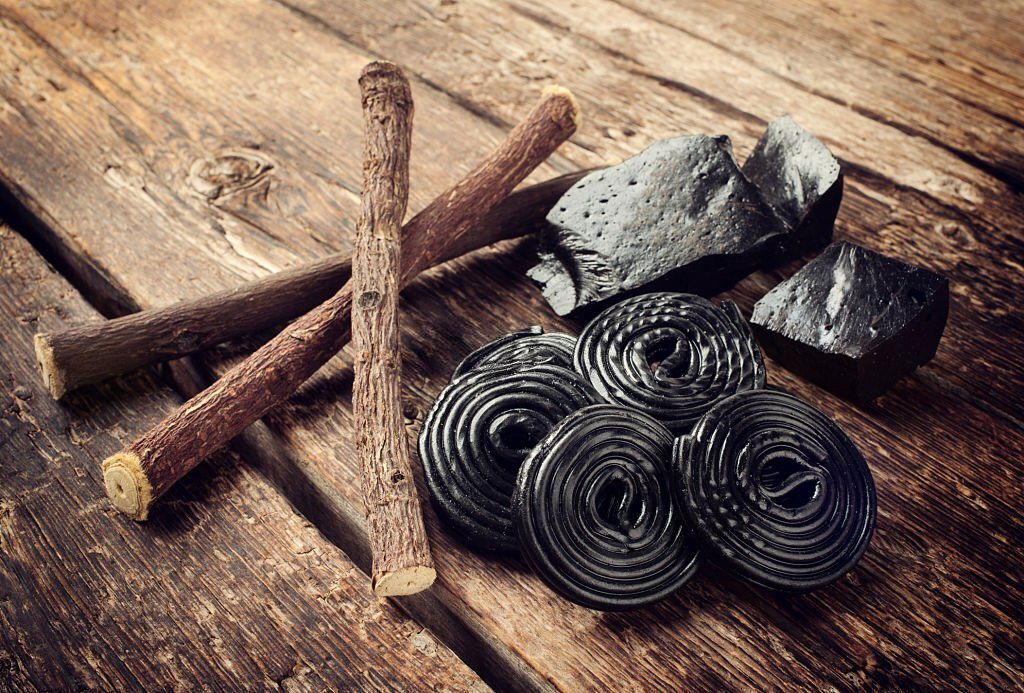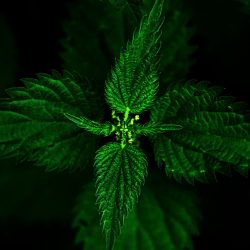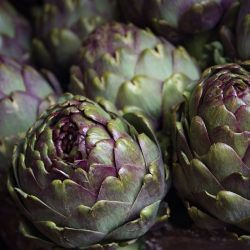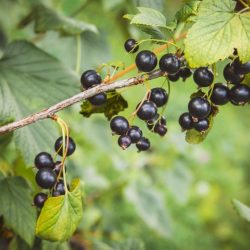The therapeutic properties of liquorice have been known since ancient times, when it was used by the Romans and Greeks to treat asthma and ulcers. Scientists of the time named it glycyrrhiza from glycys, for sugar, and rhidza, for root , meaning sweet root.
A little history
Chinese medicine considers it to be one of the 10 most important herbs, due to its ability to regulate stomach functions and boost vital energy. Nowadays, liquorice is also used for food purposes. It is used in many products, including syrups, sweets, candies and other liquorice drinks, some of which are well known.
But did you know that it’s even found in pastis de Marseille? People of a certain age well remember coco, the liquorice powder that was consumed pure or as a drink. In the form of a chewable stick, liquorice still has its fans, especially after people stop smoking.
The use of liquorice through the ages
Over the centuries, liquorice has evolved and adapted to different needs and cultures. In the Middle Ages, it was commonly used in Europe for its expectorant and soothing properties. It was also becoming an ingredient of choice in confectionery and drinks.
The rise of liquorice as a confectionery can be attributed to its introduction into Spain in the 16th century, from where it quickly spread across Europe. In Italy and France, liquorice was appreciated not only for its medicinal properties, but also for its unique taste, leading to the creation of liquorice sweets and pastilles.
With industrialisation and changes in production techniques, liquorice took a new turn. In the 19th century, the introduction of liquorice into industrial processes enabled the mass production of confectionery, making this once luxurious product accessible to everyone. This democratisation marked a significant change in the way liquorice was perceived and consumed.
In the 20th century, liquorice continued to play an important role in the food industry, but also in medical research. Modern studies have begun to explore the properties of liquorice in greater depth, in particular its anti-inflammatory effects and its potential in the treatment of various ailments.
So, from its humble beginnings in ancient times to its current role in food and medicine, liquorice has stood the test of time, constantly adapting and reinventing itself. Its rich history is a reflection of its importance to human societies through the ages, making it much more than a simple root, but a veritable cultural and medicinal heritage.
What are the main pharmacological properties of Licorice root?
Anti-inflammatory properties of liquorice :
Glycyrrhine has a mineralocorticoid type of activity (action of adrenocortical hormones similar to that of aldosterone), and slows down plasma renin activity and reduces kalaemia and kaliuresis. It also has a powerful glucocorticoid action (hormones involved in glucidoprotein metabolism). In addition, they have powerful anti-inflammatory effects, demonstrated in a study of 18 healthy volunteers, which is linked to the action of glycyrrhizin, which inhibits an enzyme, 11-β-hydroxysteroid dehydrogenase (11-β-HSD), responsible for converting active cortisol into inactive cortisone. This reduced action of 11-β-HSD results in an increase in blood levels of cortisol and certain steroid hormones.
Liquorice extract inhibits the production of ecosanoids (prostaglandin E2, thromboxane and leukotriene) synthesised by cyclooxygenases (COX) and lipoxygenases (LOX). These effects could be due in particular to the constituents glabridine and isoliquiritigenine.
Glycyrrhiza glabra L. extract inhibits lipopolysaccharide (LPS)-induced inflammation in macrophages by inhibiting the synthesis of inducible NO synthase (iNOS), cyclooxygenase-2 (COX-2), tumour necrosis factor alpha (TNF-α), and interleukins 1β (IL-1β) and 6 (IL-6).
Digestive properties of Glycyrrhiza glabra:
Oral anti-ulcer properties:
Liquorice extracts exert local analgesic and healing activity on mouth ulcers in the oral cavity. In two randomised, double-blind, controlled clinical trials, liquorice showed a significant reduction in mouth ulcer pain compared with placebo, as well as a reduction in the inflammatory halo and necrotic centre of ulcerous lesions.
Gastric anti-ulcer properties :
In vitro, the presence ofglycyrrhetic acid and polysaccharides inhibited the Helicobacter pylori strain (60 to 70% inhibition), whether or not it was resistant to clarithromycyne. Also in vitro, aqueous liquorice extract has bactericidal activity. In particular, liquorice inhibitsHelicobacter pylori strains with a minimum inhibitory concentration (MIC) of 50 to 400mg/ml. Aqueous liquorice extract and its polysaccharides inhibit the adhesion ofH. pylori to samples of human gastric mucosa.
Hepatoprotective properties :
Ex vivo, aqueous liquorice extract, as well as glycyrrhizin increases the activity of phase I enzymes, specifically CYP3A, CYP2B1 and CYP1A2. In humans, a randomised placebo-controlled clinical trial in subjects with hepatic steatosis showed that consumption of liquorice root extract also induced a decrease in ALT and ASAT activity.
Glycyrrhizin and its derivative, glycyrrhidic acid, contained in liquorice prevent the multiplication of hepatitis A and C viruses. Two reviews of the scientific literature in 2003 and 2004 concluded that liquorice extracts show promising results in the treatment of hepatitis C, but that further studies are needed to confirm this.
Immunomodulating properties (regulate immune system dysfunctions):
Immunosuppressive effect (limits the action of the immune system in autoimmune diseases, for example):
In vitro, liquiritigenin and glycyrrhetic acid reduce the cutaneous anaphylactic reaction by inhibiting IgE-induced mast cell degranulation. In liver cells affected by viral hepatitis, glycyrrhizin inhibits the cytolytic activity of complement. Other studies have shown that this compound inhibits the lytic pathway in which the membrane attack complex (MAC) is formed.
In vivo, in a model of rheumatoid arthritis, liquorice extract has been shown to reduce the destruction of articular cartilage and to reduce the expression of metallopoteinase 3 (MMP3) in inflammatory joint tissue. In addition, it was observed in this study that liquorice extract induced a reduction in serum levels of TNFα and IL-1β, which are involved in stimulating the production of metalliproteinases.
Anti-infective properties of liquorice :
Antiviral :
In vitro, glycyrrhizin inhibits the proliferation of various DNA viruses, such as herpesviruses (Herpesviridae), (herpes virus type 1 -HSV-1) and Epstein-Barr virus -EBV- and vaccinia virus, as well as that of RNA viruses (HIV-1, SARS-related coronavirus, influenza virus, respiratory syncytial virus, vesicular stomatitis virus, arbovirus). Randomised controlled trials have confirmed that glycyrrhizin and its derivatives reduce hepatocellular damage in cases of chronic hepatitis B and C.
Antibacterial :
In vitro, liquorice isoflavonoids such as glabridin have antibacterial activity. Similarly, licoricidin and the coumarins in liquorice inhibit the growth of respiratory tract bacteria such as Streptococcus pyogenes, Haemophilus influenzae and Moraxella catarrhalis.
Antioxidant and cytoprotective properties:
In vitro, lichochalcone, an oestrogenic flavonoid isolated from liquorice root, significantly inhibits the growth and moderately induces apoptosis of androgen-independent prostate cancer cells.
Aqueous liquorice root extract exerts anti-angiogenic and anti-tumour activity in vivo and in vitro on ascites tumour cells, by reducing production of vascular endothelial growth factor (VEGF), and by slowing the neovascularisation it induces.
Liquorice extracts, particularly methanolic extracts, induce apoptosis in several cancer cell lines in relation to their powerful antioxidant activity, which upregulates the levels of pro-apoptotic caspase-8 and caspase-3, and downregulates those of the anti-apoptotic protein Bcl-2.
Other properties :
- Hormonal
- Cardioprotective and cardiovascular
- Metabolic
Are there any precautions to be taken when using Licorice?
Contraindications :
- Contraindicated in cases of severe renal insufficiency.
- Commission E advises against the use of liquorice in cases of hypertension, hypokalaemia, cirrhosis and hepatitis.
- According to the EMA, liquorice is not recommended for use by pregnant or breast-feeding women, or by children and adolescents under the age of 18, due to the presence of alkaloids.
- To date, ANSES in France recommends that it should not be used for more than 6 weeks without medical advice.
- Avoid using liquorice in hormone-dependent cancers because of its oestrogenic properties
Side effects:
- Prolonged high doses of glycyrrhizin may cause mineralocorticoid effects such as fluid retention, oedema, hypokalaemia and arterial hypertension. Rare cases of myoglobinuria have been described.
Precautions for use :
- Do not use in cases of high blood pressure, unless medical advice is sought.
- Medical supervision is necessary for patients suffering from kidney disease, cardiovascular disorders or hypokalaemia. The same applies to patients taking diuretics, corticoids or stimulant laxatives at the same time, in order to monitor their electrolyte balance.
- The German Commission E recommends not exceeding 100 mg/day of glycyrrhizin. In France, the 1998 Explanatory Note advises not to exceed 3 mg/kg/day or 125 mg per day of glycyrrhizin, taking into account the simultaneous ingestion of liquorice in the form of a drink or confectionery. In fact, it is preferable to avoid combining them with phytomedicines or food supplements containing liquorice. Otherwise, the total amount of glycyrrhizin taken should be taken into account so as not to exceed the maximum recommended dose.
- The duration of treatment should not exceed 4 to 6 weeks, unless medical advice is sought. Use therapeutic windows (e.g. taking liquorice 5 days out of 7 or 3 weeks a month). In the case of chronic or recurrent use of liquorice extract, medical supervision is recommended.
- When taking liquorice, eat a diet rich in potassium (bananas, apricots).
Drug interactions :
- Liquorice may interact with digitalis and its derivatives, loop and thiazide diuretics, corticosteroids and oral contraceptives.
- Avoid association with :
- Digitalin (increased sensitivity)
- Diuretics and stimulant laxatives (risk of hypokalaemia)
- Corticosteroids (additive effect, worsening of hypokalaemia)
- Oral contraceptives (increased effects of glycyrrhizin)
- Antihypertensives (altered effect)
- Omeprazole (decrease in plasma concentrations)
- The German Commission E specifies that long-term use of liquorice may potentiate the effect of cardiotonics, difficulty in adjusting antihypertensive treatment, or that it should not be taken with antikaliuretic diuretics (spironolactone, triamterene, amiloride).
How should Licorice be taken and at what dosage?
Dry form :
- As a dietary supplement, in the form of liquorice root extract in capsules: 1 to 2 capsules per day.
Liquid form:
- Standardised fresh plant fluid extract: 5 to 10 ml per day in a glass of water.
- Honey glycerine fluid extract: 5 ml 2 to 3 times a day in water.
- Decoction: infuse 2 to 4 g of dried roots in 150 ml of boiling water, 1 cup 2 to 3 times a day. Do not exceed 12g per day.
Medical literature and clinical trials:
- Malek M. et al, Licorice against Helicobacter pylori. mashhad University of medical sciences dept car microbiology; Mashad, Iran (3rd international congress on health, environment and natural products), 2004
- Liu J. et al, Medicinal herbs for hepatitis C virus infection; a Cochrane hepatobiliary systematic review of randomized trials, Am J Gastroenterol, 2003
- Mitscher L.A. et al, Antimicrobiam agents from higher plants. Antimicrobial isoflavonoids and related substances from Glycyrrhiza glabra L. var. typica, J Nat Prod, 1980
- Krausse R. et al, In vitro car. anti Helicobacter pylori activity of Extractum liquiritiae, glycyrrhizin and its metabolites; J Antimicrob Chemother, 2004
- Wittschier N. et al, Large molecules as anti-adhesive compounds against pathogens, J Pharm Pharmacol, 2007
- O’mahony R. et al, Bactericidal and anti-adhesive properties of culinary and medicinal plants against Helicobacter pylori, World J Gastroenterol, 2005
- Chandrasekaran C.V. et al, Dual inhibitory effect of Glycyrrhiza glabra (GutGard) on COX and LOX car products, Phytomedicine, 2011







